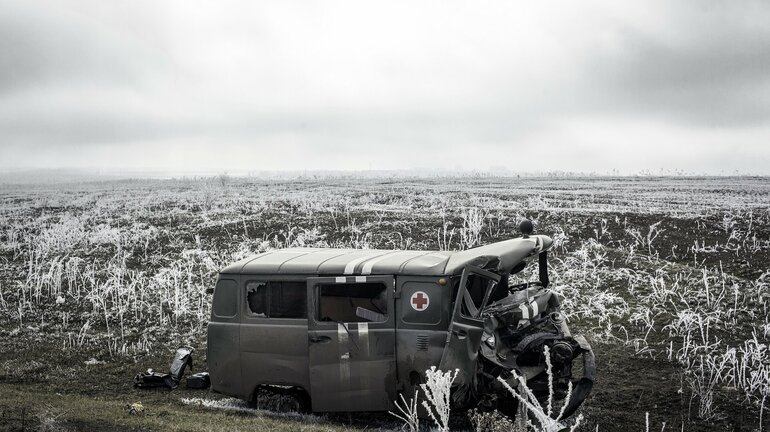New hope in Ukraine conflict?

On 7 June another round of negotiations about the implementation of the Minsk II Agreement of September 2015 got under way in Minsk at the level of the four Working Groups of the Trilateral Contact Group (TCG) under the auspices of the OSCE. The TCG brings together representatives from Ukraine, Russia and the self-proclaimed Donetsk and Luhansk People’s Republics. While nobody is expecting a breakthrough in the stalemate characterizing the Minsk process, this week’s negotiations at the detailed operational level highlight the most pressing humanitarian issues on which agreement has to be reached, the need for a reform of the institutional mechanisms of the Minsk process, and the extent to which the notion of “freezing” the current conflict is misleading.
The Minsk process aimed at securing a ceasefire and resolving the conflict in eastern Ukraine proceeds at two levels: at the diplomatic level there is the Normandy format, referring to the talks between the heads of state (or the foreign ministers) of Germany and France, jointly representing the EU, and Ukraine and Russia. And at the operational level there are the Minsk talks centred on the Trilateral Contact Group. It is here that concrete steps towards the implementation of the Minsk agreement are being negotiated. The four Working Groups of the TCG focus on security, humanitarian, political, and economic issues. While progress has been slow in general, the political working group is the one that is most deadlocked. This is due to the inbuilt tension between the security and political dimensions of the Minsk agreement. The security dimension includes restoring Ukraine’s control over the border, while the political dimension includes holding local elections in the occupied territories and implementing a special status for these territories. Russia and Ukraine do not agree on the order in which these steps should be taken.
Over time, more of the political content of the Minsk talks has shifted to the level of the Normandy talks, which have taken place twice a year since their inception in June 2014. Each time, the talks have signaled a commitment to conflict management, in particular on behalf of Germany and France, and these summits have succeeded in restoring at least a temporary ceasefire or decreased the fighting. In-between the high-profile Normandy summits the heads of states, their foreign ministers and advisers remain in regular contact, thereby making an overlap with the four TCG Working Groups unavoidable. This relationship between the Normandy format and the TCG needs to be readjusted in order to strengthen the link between the diplomatic and political levels.
As the ongoing war is getting little coverage in the Western media, issues like internal and external displacement and the humanitarian crisis in the Donbas, especially in the occupied territories, are not part of the public discourse. The International Red Cross cannot access the self-proclaimed People’s Republics, although access, including to detainees in prisons, is common in many conflicts. OSCE officials involved in the TCG estimate that even if an agreement on the occupied territories were to be reached immediately, the demining and reconstruction process would take at least five years. The humanitarian issues need to be given more attention by Western governments, media and international institutions.
Officials and observers from Ukraine, Russia and Western countries increasingly present a “frozen conflict” as the best possible option for eastern Ukraine. This expectation is borne out of a misconception about the concept of “frozen conflicts” and of the situation in eastern Ukraine. The description has been used extensively with regard to the other conflicts in the post-Soviet space (Transnistria, Nagorno-Karabakh, South Ossetia and Abkhazia), although the situation in these cases has been evolving continuously. The case of the Russian-Georgian war in 2008 illustrates that so-called “frozen conflicts” can easily be reignited.
The notion of “freezing” a conflict reflects an adaption of the concept to not just describe a presumed outcome of political developments but a political strategy to maintain the status quo and thereby deliver a degree of stability. In the case of the Donbas, however, there is no such option, as a continuation of the current situation would lead to a deepening of the humanitarian crisis, further displacement from the occupied territories, a spread of criminal structures, including to both Russia and Ukraine, and a political vacuum that is most likely to be filled by local actors taking matters into their own hands. Compared to the other post-Soviet conflicts, the immediate implications for Europe would also be more serious, as this strategy would effectively perpetuate the stand-off between Russia and Europe or the West more generally. There is nothing stable to this status quo, given the military build-up on the Russian side and the deployment of additional NATO troops, and an increased likelihood of a serious military incident, for example over the Baltic Sea.
In sum, the latest round of negotiations in the TCG Working Groups will not end the stalemate. But they highlight the need for a reform of the Minsk process, both institutionally with regard to the relationship between the Normandy talks and the TCG and in terms of complementing Minsk II with a more targeted agenda on specific issues. Such a discussion could benefit from widening the circle of participating states. In this add-on format small-scale experiments with local elections in the occupied territories, the modalities of a swap of prisoners and amnesty provisions, as well as steps towards at least a temporary special status of the occupied territories that leaves their long-term perspective open, have to be discussed.
Gwendolyn Sasse is the Director of the Centre for East European and International Studies (ZOiS).